THY1 is a prognostic-related biomarker via mediating immune infiltration in lung squamous cell carcinoma (LUSC)
- PMID: 38819947
- PMCID: PMC11210259
- DOI: 10.18632/aging.205880
THY1 is a prognostic-related biomarker via mediating immune infiltration in lung squamous cell carcinoma (LUSC)
Abstract
Thymus cell antigen 1 (THY1) has been proven to play pivotal roles in many diseases. However, we do not fully understand its functional mechanism, especially in lung squamous cell carcinoma (LUSC). Here, we aimed to perform a comprehensive analysis to explore the expression and prognostic values of THY1 in LUSC using bioinformatic technology. Some online public databases (e.g., ONCOMINE, PrognoScan, TIMER, Kaplan-Meier plotter, STRING, LinkedOmics, and GEPIA) were used to explore the expression, prognostic significance, and potential molecular mechanism of THY1. The analysis indicated that THY1 was significantly up-regulated and closely correlated with poor prognosis in many malignant tumors, including LUSC. Further analysis revealed that over-expression of THY1 was significantly correlated with clinicopathological parameters (e.g., individual cancer stage, age, smoking habits, nodal metastasis status, and TP53 mutation status) in LUSC. The CpG islands methylation of THY1 was negatively correlated with THY1 mRNA expression in The Cancer Genome Atlas Program (TCGA). Further enrichment analysis of THY1 correlated genes revealed that they were mainly correlated with the formation of extracellular matrix (ECM), and got involved in the pathway of epithelial mesenchymal transition (EMT). Furthermore, differentially expressed THY1 was significantly correlated with immune cell infiltrations and poor prognosis in LUSC. In summary, bioinformatic analysis demonstrated that THY1 was significantly over-expressed and closely correlated with unfavorable prognosis in LUSC, which may apply as a promising diagnostic and therapeutic biomarker for LUSC in the future.
Keywords: LUSC; THY1; bioinformatics; biomarker; immune infiltration.
Conflict of interest statement
Figures

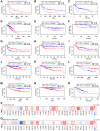
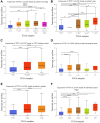
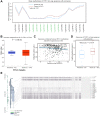
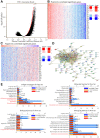
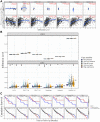

Similar articles
-
MSR1 in lung squamous cell carcinoma: Prognostic and immunological values in pan-cancer and single-cell analyses and a cohort study.Int Immunopharmacol. 2025 Jan 3;145:113811. doi: 10.1016/j.intimp.2024.113811. Epub 2024 Dec 11. Int Immunopharmacol. 2025. PMID: 39667048
-
Significance of NKX2-1 as a biomarker for clinical prognosis, immune infiltration, and drug therapy in lung squamous cell carcinoma.PeerJ. 2024 May 1;12:e17338. doi: 10.7717/peerj.17338. eCollection 2024. PeerJ. 2024. PMID: 38708353 Free PMC article.
-
System analysis of FHIT in LUAD and LUSC: The expression, prognosis, gene regulation network, and regulation targets.Int J Biol Markers. 2022 Jun;37(2):158-169. doi: 10.1177/03936155221084056. Epub 2022 Mar 7. Int J Biol Markers. 2022. PMID: 35254116
-
Exostosin1 as a novel prognostic and predictive biomarker for squamous cell lung carcinoma: A study based on bioinformatics analysis.Cancer Med. 2021 Apr;10(8):2787-2801. doi: 10.1002/cam4.3643. Epub 2020 Dec 13. Cancer Med. 2021. PMID: 33314711 Free PMC article.
-
Primary Lung Squamous Cell Carcinoma With Intestinal Metastasis: A Case Report and Literature Review.Clin Respir J. 2024 Aug;18(8):e13817. doi: 10.1111/crj.13817. Clin Respir J. 2024. PMID: 39118303 Free PMC article. Review.
References
-
- Ettinger DS, Akerley W, Borghaei H, Chang AC, Cheney RT, Chirieac LR, D'Amico TA, Demmy TL, Govindan R, Grannis FW Jr, Grant SC, Horn L, Jahan TM, et al., and National comprehensive cancer network. Non-small cell lung cancer, version 2.2013. J Natl Compr Canc Netw. 2013; 11:645–53. 10.6004/jnccn.2013.0084 - DOI - PubMed
-
- Lung HL, Cheung AK, Cheng Y, Kwong FM, Lo PH, Law EW, Chua D, Zabarovsky ER, Wang N, Tsao SW, Stanbridge EJ, Lung ML. Functional characterization of THY1 as a tumor suppressor gene with antiinvasive activity in nasopharyngeal carcinoma. Int J Cancer. 2010; 127:304–12. 10.1002/ijc.25047 - DOI - PubMed
MeSH terms
Substances
LinkOut - more resources
Full Text Sources
Medical
Research Materials
Miscellaneous

